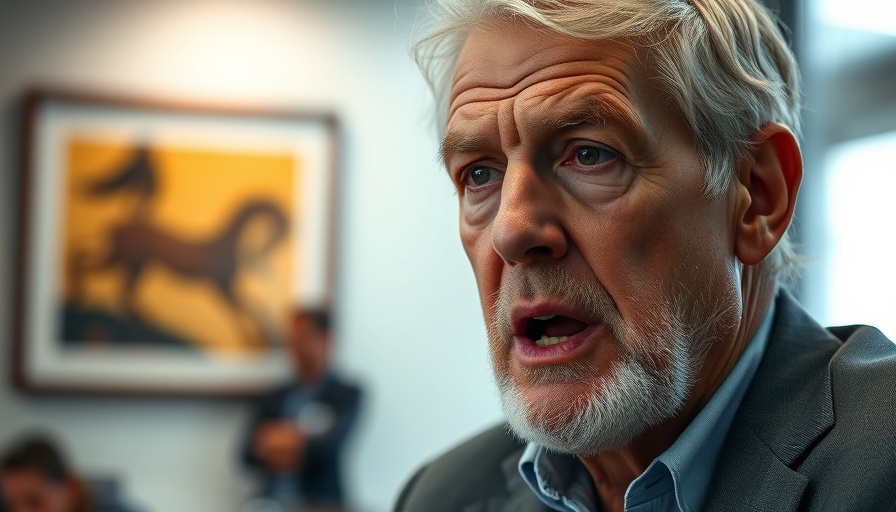
The Shift in Power Dynamics: Cabinet Control vs Musk’s Strategies
In a striking turn of events, President Donald Trump has shifted the responsibility of workforce reductions from Elon Musk, the high-profile billionaire and advisor, back to his Cabinet members. This initiative comes in the wake of growing tensions and criticism regarding the management of federal staffing cuts and is indicative of Trump's evolving approach to governance.
During a Cabinet meeting held last Thursday, Trump explicitly instructed his agency heads to take charge of layoffs, emphasizing their agency's needs. He stated, "I want them to do the best job they can. Where we have good people, that’s precious, that’s very important, and we want them to keep the good people." This marked a notable shift from previous signals that suggested a more aggressive and perhaps hasty reduction of government personnel, led predominantly by Musk's directives.
Legal Ramifications of Federal Staffing Changes
Trump's recent changes in strategy seem to align with increasing legal pressures on the administration regarding the firings of federal employees. Just days before the meeting, a U.S. District Judge ordered a halt to mass terminations, highlighting irregularities in the process and the potential illegality of the actions taken against some probationary employees. Legal experts have pointed out that the Trump administration is now attempting to create a stronger legal foundation by transferring decision-making back to agency leaders, this change potentially protecting the administration from backlash stemming from unlawful dismissals.
This legal scrutiny does not merely stem from partisan disputes; it highlights a genuine concern over employee rights and adherence to proper procedures. Advocates for federal employees have voiced their discontent with how improper evaluations and arbitrary firing decisions have left many unjustly terminated.
Implications for Federal Employment: What Lies Ahead?
With Trump’s recent statement suggesting a more surgical approach to staff reductions—one that utilizes a “scalpel” rather than a “chainsaw”—the implications for the federal workforce are profound. Trump’s Cabinet now holds significant power over personnel decisions, however, the repercussions of their choices could be dire if mismanaged. Many federal agencies are already struggling with inadequate staffing, which poses further complications as they navigate their mandated services amid necessary budget cuts.
Some agency heads have already indicated they will prioritize retaining skilled personnel, even if it means ignoring outside directives, including those from Musk. This pushback indicates a growing conscious effort among department leaders to maintain workforce stability in the face of new policies.
Congressional and Public Response
The response from Congress has been mixed, as some lawmakers express skepticism toward both Musk’s and the administration’s strategy for managing cuts. With Trump's directives to Cabinet members reflecting an attempt to balance efficiency with effectiveness, legislators like Senate Majority Leader John Thune openly advocate for personal accountability among agency heads. It emphasizes the need for those directly in charge to make informed decisions rather than enforce sweeping cuts devoid of context.
Public sentiment regarding these changes continues to be fraught with anxiety for federal employees who recently suffered sweeping terminations. Advocacy groups representing workers are being vigilant, discovering legal strategies to counteract unlawful dismissals and promote transparency in decision-making processes.
The Bigger Picture: Trump’s Reevaluation of Bloodletting Policies
In this complicated landscape, Trump's administration faces critical challenges ahead as it seeks to streamline government operations. His “bloodletting policies” which have characterized both Musk's and the White House’s early strategies may need reevaluation if they are to effectively lead without legal ramifications or public backlash.
The balance between the necessity of budgetary constraints and the integrity of federal employment practices will undoubtedly shape the success of these initiatives. Moving forward, the leadership from each Cabinet member will be pivotal in ensuring that cuts, when deemed necessary, are handled with diligence, preserving the essential roles federal employees play in upholding government services.
This unfolding situation signals a vital moment in Trump's second term, illustrating the engaging conflict between traditional governance and the influence of outside business leaders. As we watch how this dynamic evolves, it is crucial for citizens and policymakers to stay informed about the implications of these changes on democracy, the economy, and public trust in government institutions.
Understanding these mechanisms is vital as industries and the public reorganize themselves in response to evolving governmental policies, signaling the importance of maintaining advocacy and accountability amidst changing power dynamics.
As the debate around workforce reductions continues, staying informed and engaged is essential for professionals and citizens alike. The outcome of these changes could have lasting impacts on our democratic institutions and public services we rely upon daily.
 Add Row
Add Row  Add
Add 




Write A Comment